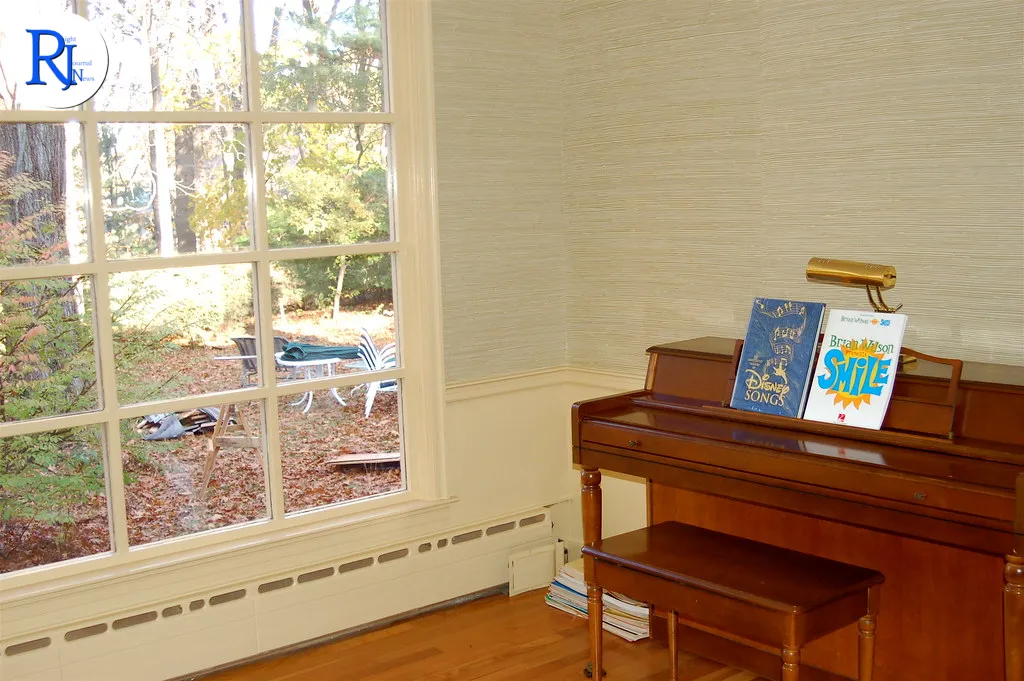Grasscloth wallpaper, a classic yet versatile home decor element, continues to captivate interior design enthusiasts with its natural beauty and unique texture. This wall covering, made from natural fibres such as jute, hemp, and bamboo, offers an organic aesthetic that complements a wide range of interior styles. As sustainability becomes an increasingly significant consideration in home decor choices, grasscloth wallpaper’s eco-friendly attributes further enhance its appeal.
Originating centuries ago in Asia, grasscloth wallpaper has steadily gained popularity across the globe. Its ability to add depth and warmth to a room, coupled with its environmental benefits, has solidified its place in modern interior design. Today, it is celebrated not only for its aesthetic qualities but also for its sustainable production methods, aligning with the growing demand for environmentally responsible home decor solutions.

A Rich History: From Asia to the World
Grasscloth wallpaper traces its roots back to Asia, where artisans handcrafted it using traditional techniques passed down through generations. The material’s natural texture and earthy tones made it a favourite among those seeking to bring a touch of nature into their homes. As trade routes expanded, grasscloth made its way to Europe and eventually to the Americas, where it became a symbol of elegance and sophistication in interior design.
The mid-20th century saw a surge in grasscloth’s popularity, particularly in the United States, where it adorned the walls of upscale homes and boutique hotels. Its resurgence in recent years can be attributed to a renewed interest in sustainable and natural materials, as well as a shift towards more personalised and unique interior design choices.
The Production Process: Craftsmanship and Sustainability
The production of grasscloth wallpaper involves meticulous craftsmanship, with each roll being a testament to the skill and dedication of the artisans who create it. The process begins with the harvesting of natural fibres, which are then dried and woven into sheets. These sheets are carefully backed with rice paper, creating a durable wall covering that retains its natural texture and colour variations.
This method of production is notably sustainable, as it relies on renewable resources and minimises waste. The use of natural dyes further enhances its eco-friendly credentials, making grasscloth wallpaper an attractive choice for environmentally conscious consumers. As the demand for sustainable home decor options continues to rise, grasscloth wallpaper stands out as a responsible and stylish choice.
The Unique Appeal of Grasscloth: Texture and Versatility
One of the defining features of grasscloth wallpaper is its rich texture, which adds a layer of depth and interest to any space. Unlike traditional wallpapers, which often feature repeating patterns, grasscloth offers a more organic and varied appearance. This uniqueness makes it a popular choice for accent walls, where its natural beauty can be showcased to its full potential.
In terms of versatility, grasscloth wallpaper complements a wide range of interior styles, from minimalist and contemporary to rustic and eclectic. Its neutral tones provide a perfect backdrop for other design elements, allowing for greater flexibility in furniture and accessory choices. Whether used in a living room, bedroom, or even a home office, grasscloth wallpaper adds a touch of elegance and sophistication.
Considerations for Installation and Maintenance
While grasscloth wallpaper offers numerous aesthetic and environmental benefits, it is important to consider its installation and maintenance requirements. Due to its natural fibres, grasscloth is more sensitive to moisture and humidity than traditional wallpapers. Therefore, it is best suited for areas with stable environmental conditions, avoiding spaces like bathrooms or kitchens where high humidity levels are common.
When it comes to maintenance, grasscloth requires gentle care to preserve its natural beauty. Regular dusting and the occasional light vacuuming can help maintain its appearance. In the event of stains, a soft cloth and mild detergent can be used, taking care to avoid excessive moisture. With proper care, grasscloth wallpaper can remain a stunning feature in a home for many years.
The Future of Grasscloth Wallpaper in Interior Design
As the trend towards sustainable living and eco-friendly home decor continues to grow, grasscloth wallpaper is poised to remain a popular choice among consumers and designers alike. Its timeless appeal, combined with its environmentally responsible production, ensures its relevance in the ever-evolving world of interior design.
Looking ahead, innovations in production techniques and the development of new natural fibres could further enhance the versatility and durability of grasscloth wallpaper. As more homeowners seek to create spaces that reflect their personal values and aesthetic preferences, grasscloth offers a beautiful and responsible solution that bridges the gap between style and sustainability.

